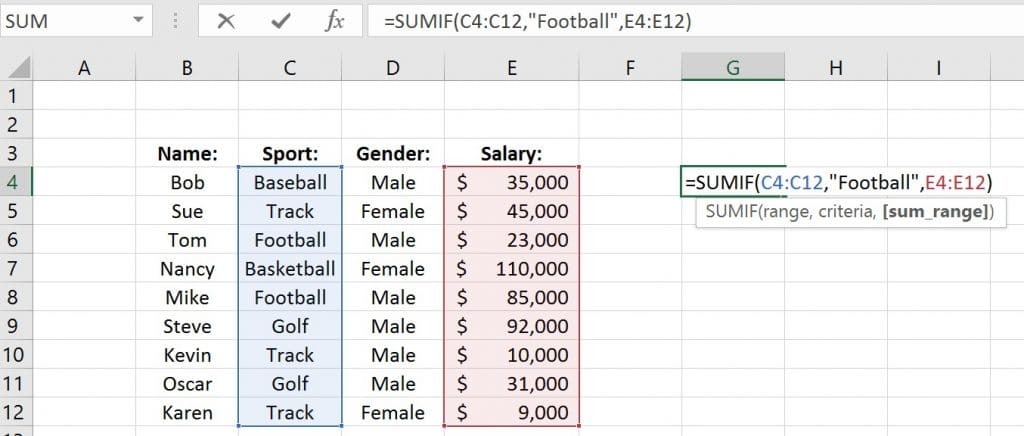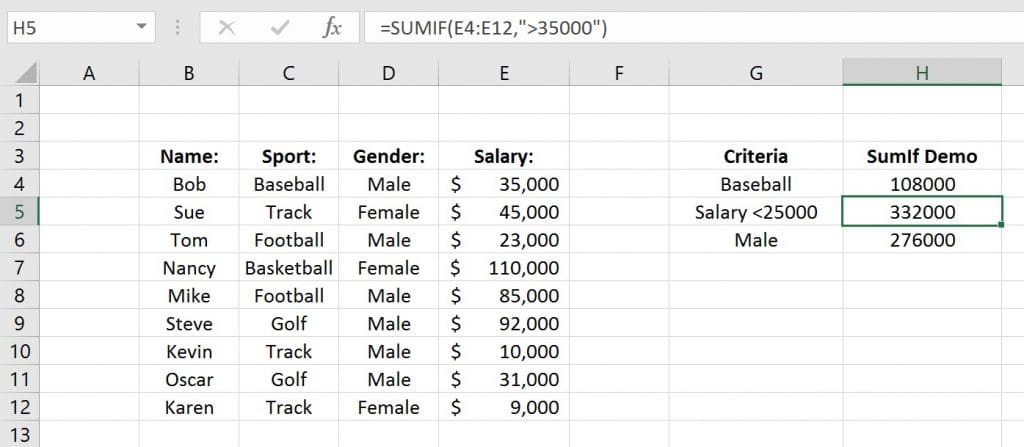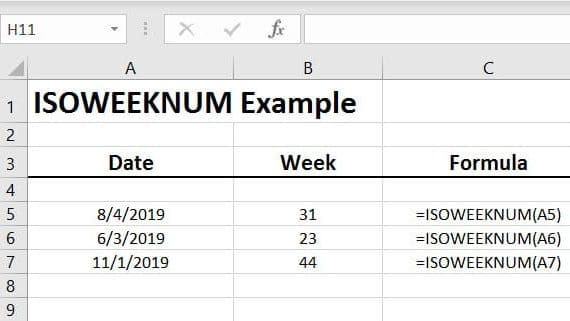The SUMIF function in Excel sums up particular cells based upon certain criteria. Criteria is specified using logical operators. Common operators are >,<,<>, and =. Wildcard operators can also be used. These include * and ?. Excel uses wildcard operators to return a partial match. We will demonstrate an example of this below.
=SUMIF (range, criteria, [sum_range])
Syntax Explanation:
- range – Range of cells that you want to apply the criteria against.
- criteria – Criteria used to determine which cells to add. This can be in the form a number, expression, text, or function.
- sum_range – [field is optional] Specifies the cells to add together. If the sum_range is omitted, the cells in range are added together instead.
Demonstration:

In the above example, we use the Sumif Function to check the range C4:C12 for the sport “Football.” If a cell in the range C4:C12 has the word “Football,” excel will sum the value in the corresponding cell in column E.
In the below example, it shows how to use an operator to look for Salarys over 35,000. By using the > sign and the range E4:E12, Excel will sum up all of the salaries over 35,000. This can obviously be tweaked for multiple uses.

In many cases, there is a need to use multiple criteria. This is achieved using the SumIfs function.




Pingback: Sum if less than in Excel Formula - Excelbuddy.com